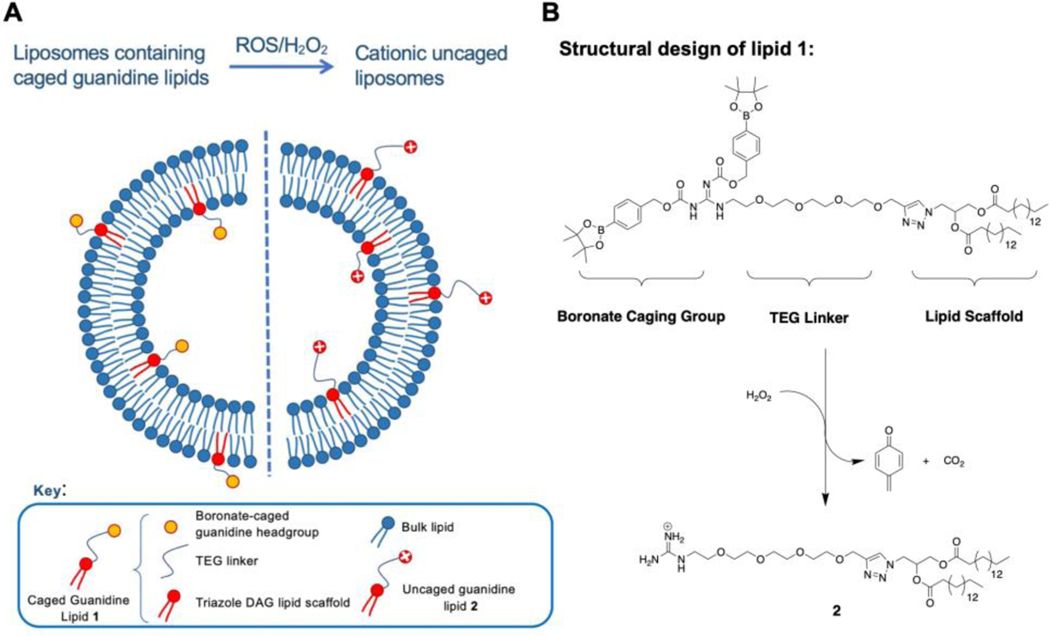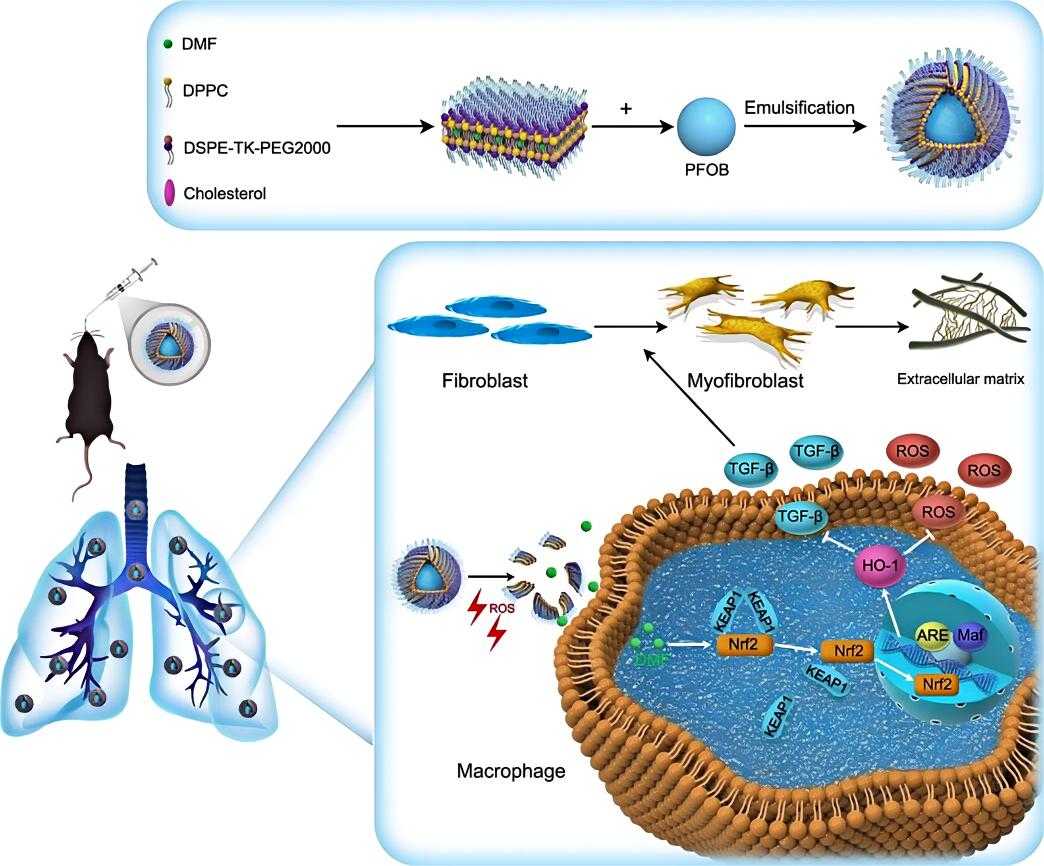Custom Reactive Oxygen Species (ROS)-responsive Liposome Service
Inquiry
Reactive Oxygen Species (ROS) is a class of highly reactive oxidants, which participate in many important physiological and pathological processes in organisms, such as cell signaling, inflammatory response, and tumorigenesis. ROS-responsive liposomes can use the oxidation capacity of ROS to achieve changes in polymer structure or properties to achieve the purpose of regulating drug release, improving biocompatibility, and enhancing therapeutic effect. Intelligent, controllable and efficient ROS-stimulated responsive liposomes are the focus of current research and development of drug delivery systems. CD Formulation has advanced lipid preparation technology, and a multi-functional lipid platform has been established to support various studies in drug development.
What Are Reactive Oxygen Species (ROS)-responsive Liposomes?
Reactive Oxygen Species (ROS) are a series of chemically active oxygen-containing molecules, such as hydrogen peroxide (H2O2), superoxide anion (O2-), and hydroxyl radical (·OH), which play an indispensable role in the process of cell signal transduction. Among endogenous ROS, H2O2 is considered to be the most important member, which is mainly produced by mitochondria. Compared with other ROS, H2O2 has relatively lower activity and higher concentration. Abnormally elevated levels of ROS have been detected in many types of diseases, including cancer, inflammation, and neurodegenerative diseases. In healthy cells, the baseline concentration of reactive oxygen species (ROS) is around 20×10-3 μM under normal conditions, but in specific tumors and inflamed tissues, ROS levels can increase to as high as 100 μM. Due to the large differences in ROS levels between disease and normal tissues, many ROS-responsive liposomes have been developed.
 Fig.1 Schematic diagram of ROS-responsive liposomes in targeted drug delivery. (Lou J, et al., 2022)
Fig.1 Schematic diagram of ROS-responsive liposomes in targeted drug delivery. (Lou J, et al., 2022)
Explore Our Custom ROS-responsive Liposome Service
ROS-responsive Liposome Customization
The ROS-responsive liposome system is designed to trigger drug release at high ROS levels. Our ROS-responsive liposome development platform enables the formulation of functional liposomes for different diseases, including drugs for atherosclerotic lesion areas, tumor drugs, diabetes complications, Cardiac repair disorders after myocardial ischemia-reperfusion (MI/R) injury, etc. Numerous ROS-responsive materials are available, including thioether, selenium, tellurium, thioketone, polysaccharide, aminoacrylate, borate, peroxalate, and polyproline.
Multiple Stimuli Responsive Liposome Customization
In addition to single ROS-responsive liposomes, we can offer multiple stimulus-responsive liposomes, including ROS/GSH/ multi-responsive liposomes, pH/ROS dual-responsive liposomes, etc.
ROS-responsive Liposome Hydrogel Customization
We can offer composites of heat-sensitive liposome hydrogels and ROS-responsive liposome hydrogels that enable precise sequential drug release to enhance molecularly targeted therapy and enhance immune activation.
The Study of ROS Responsiveness and Drug Release Rate
The release and response rate of ROS liposomes are systematically evaluated with our proprietary ROS-responsive in vitro and in vivo drug release evaluation platform, designed to provide high-quality ROS-responsive liposomes.
Analysis of Physicochemical Properties
Mainly for characterization services: particle size, potential, encapsulation rate, drug loading, etc.
Our Capabilities for Customizing ROS-responsive Liposomes
| Items |
Detailed Information |
| Physicochemical characterization |
- Including particle size, potential, encapsulation rate, drug loading, etc.
|
| The study of ROS responsiveness and drug release rate |
- In vivo and in vitro release platform
- Evaluation of the rate at which ROS stimulates liposomes to release drugs.
|
| Multiple stimuli responsive liposome development |
- Exploration for the potential of multiple responses to stimulating liposomes: ROS/GSH/multi-responsive liposomes, pH/ROS dual-responsive liposomes.
|
| Multi-treatment strategy development |
- On this platform, we can integrate ROS-responsive drug delivery strategies with other therapeutic modalities such as thermal therapy, photodynamic therapy, ultrasound therapy, near-infrared therapy, etc.
|
Our Key Advantages in Customizing ROS-responsive Liposomes
- Advanced platforms. Our platform supports the development of multiple stimulus-responsive liposomes, not limited to one.
- Comprehensive analysis service. From physical and chemical properties to in vitro and in vivo evaluation, our customized products ensure high-quality, multi-functional liposome products.
- Skilled teams. Our R&D team consists of many scientists with multi-disciplinary backgrounds who are well-versed in the development and evaluation of ROS-stimulated liposomes.
Published Data
Technology: ROS-responsive liposome for the delivery of Nrf2 agonist dimethyl fumarate (DMF) in fibrotic lung technique
Journal: Journal of Nanobiotechnology
IF: 11.5
Published: 2022
Results: In this study, the authors aim to design a ROS-responsive liposome for delivering Nrf2 agonist DMF in the fibrotic lung. In addition, they investigated its therapeutic effect on pulmonary fibrosis and macrophage activation. ROS-responsive DSPE-TK-PEG@DMF liposomes (DTP@DMF NPs) loaded with DMF were synthesized. They found that DTP@DMF NPs can reduce macrophage-mediated fibroblast to myofibroblast transformation and extracellular matrix deposition by upregulating Nrf2 signaling, thereby alleviating pulmonary fibrosis. This ROS-responsive liposome is expected to be an ideal inhaled drug delivery system in clinical practice.
 Fig.2 Illustration of ROS-responsive liposome for fibrotic lung. (Liu, J., et al., 2022)
Fig.2 Illustration of ROS-responsive liposome for fibrotic lung. (Liu, J., et al., 2022)
CD Formulation has developed a professional platform for reactive oxygen species (ROS)-responsive liposomes and can provide customization services. If you need any help, please do not hesitate to contact us.
References
- Lou J, Qualls ML, et al. Reactive Oxygen Species (ROS) Activated Liposomal Cell Delivery using a Boronate-Caged Guanidine Lipid. Chemistry. 2022. Aug 16; 28(46): e202201057.
- Liu, J., Wu, Z., et al. ROS-responsive liposomes as an inhaled drug delivery nanoplatform for idiopathic pulmonary fibrosis treatment via Nrf2 signaling. J Nanobiotechnol. 2022,20, 213.
How It Works
STEP 2
We'll email you to provide your quote and confirm order details if applicable.
STEP 3
Execute the project with real-time communication, and deliver the final report promptly.
Related Services


 Fig.1 Schematic diagram of ROS-responsive liposomes in targeted drug delivery. (Lou J, et al., 2022)
Fig.1 Schematic diagram of ROS-responsive liposomes in targeted drug delivery. (Lou J, et al., 2022) Fig.2 Illustration of ROS-responsive liposome for fibrotic lung. (Liu, J., et al., 2022)
Fig.2 Illustration of ROS-responsive liposome for fibrotic lung. (Liu, J., et al., 2022)
